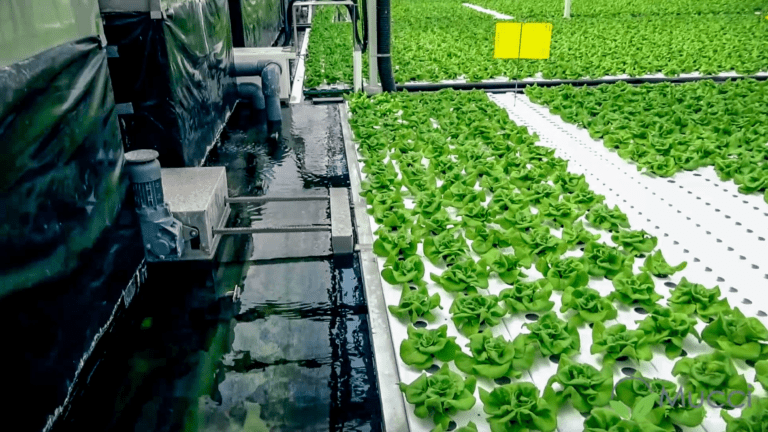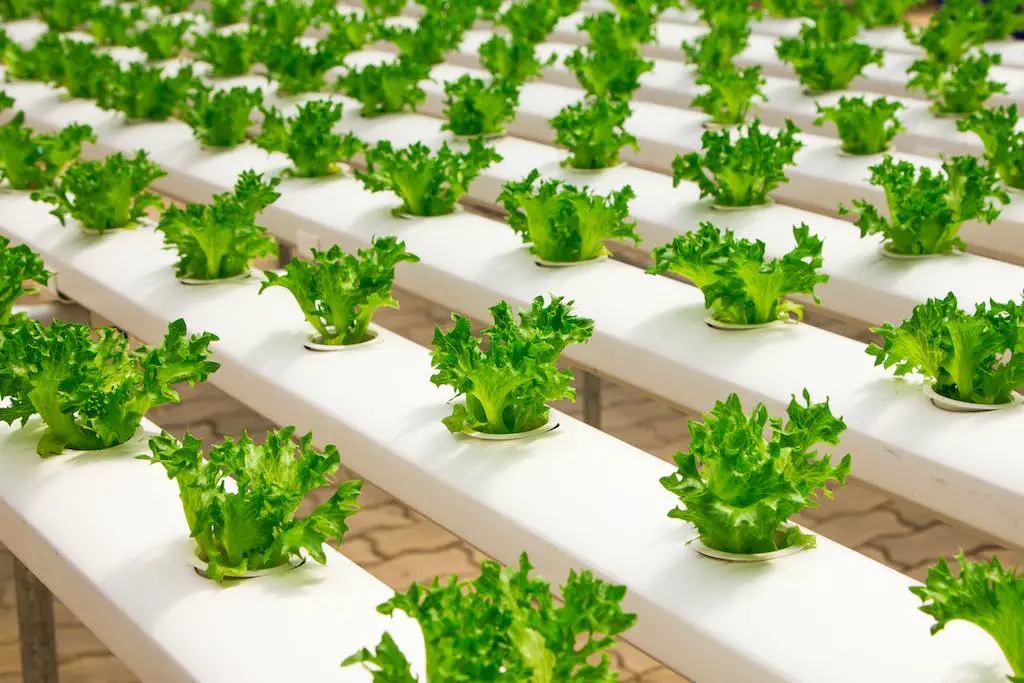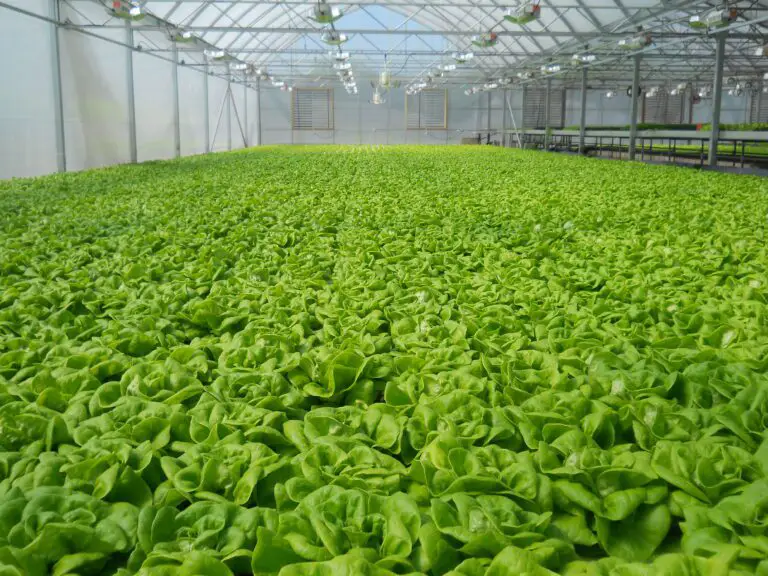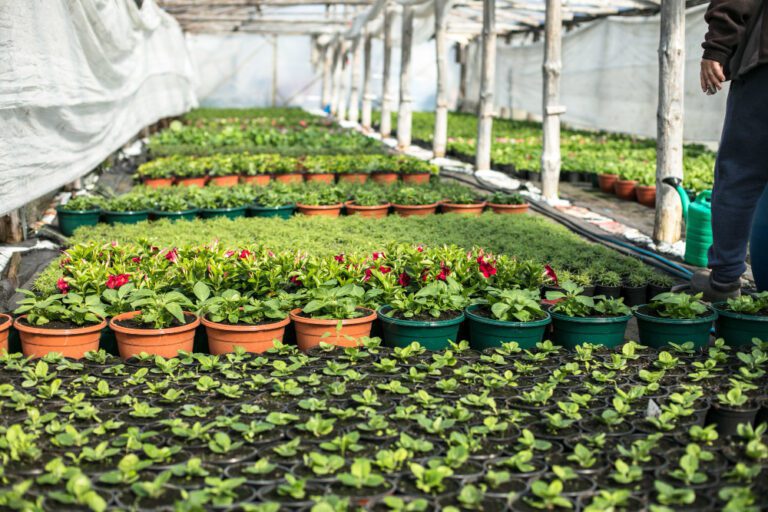Types of Grow Light Timers: How to Automate and Control Your Grow Light Schedule
Table of Contents
Grow Light Timer Basics
A grow light timer is an essential tool for any indoor gardener. It allows you to control the amount of time your grow lights are on, ensuring that your plants receive the optimal amount of light for healthy growth. But what exactly are grow light timers and how do they work?
At its core, a grow light timer is a device that allows you to automate the on/off cycle of your grow lights. By simply plugging your lights into the timer and setting the desired on/off times, you can create a consistent and reliable light schedule for your plants. This is particularly important for indoor gardening, where natural sunlight is limited and the duration of light exposure needs to be carefully managed.
In addition to providing a consistent light schedule, grow light timers offer a range of other benefits. They help to conserve energy by ensuring that your lights are only on when necessary. They also eliminate the need for manual operation, saving you time and effort. Furthermore, by automating your light schedule, you can reduce the risk of human error and ensure that your plants receive the ideal amount of light each day.
When choosing a grow light timer, it is important to consider the specific needs of your plants and the type of grow lights you are using. Some timers offer basic on/off functionality, while others come with advanced features such as customizable programming, multiple on/off settings per day, and even remote control capabilities. Understanding these features and selecting the right timer for your setup will ensure that your plants receive the precise light cycle they require for optimal growth.
Choosing the Right Timer for Your Grow Lights
When it comes to choosing the right timer for your grow lights, there are several factors to consider. First and foremost, you’ll want to determine the specific needs of your plants. Different types of plants require different amounts of light exposure and darkness. For example, some plants need more hours of light than others, while some plants need a period of prolonged darkness to trigger their flowering stage.
Another important factor to consider is the wattage and type of grow lights you are using. Certain timers may be better suited for high-intensity discharge (HID) lights, while others may work best with LED or fluorescent lights. It’s essential to find a timer that can handle the power load of your specific grow lights to ensure proper functionality.
Additionally, you’ll want to consider the features and functions offered by different timers. Some timers may have built-in programming options that allow you to set specific on and off times for your lights. Others may offer additional features such as dimming capabilities or the ability to control multiple lights simultaneously. Assessing your specific needs and preferences will help you find a timer that best suits your grow light setup.
Understanding Timer Features and Functions
Timers are essential tools for managing the light schedule of your grow lights. Understanding the features and functions of timers is crucial for achieving optimal growth and maximizing your plants’ potential.
One important feature to consider when choosing a timer is its programmability. A programmable timer allows you to set specific on and off times for your grow lights, ensuring that your plants receive the right amount of light at the right time. This feature is especially useful if you have different plants with varying light requirements or if you want to simulate different light cycles for specific growth stages.
Another important function to look for in a timer is its accuracy. A reliable timer should maintain consistent time intervals between on and off cycles, ensuring that your plants receive a consistent amount of light. Inaccurate timers can disrupt your plants’ growth patterns, leading to poor development and yield. It’s worth investing in a timer with a reputation for accuracy to avoid any potential setbacks in your gardening endeavors.
By understanding the features and functions of timers, you can choose the right one for your grow lights and ensure that your plants receive the optimal amount of light for their growth. In the next section, we will delve into the process of setting up your grow light timer and creating an optimal light schedule for your plants.
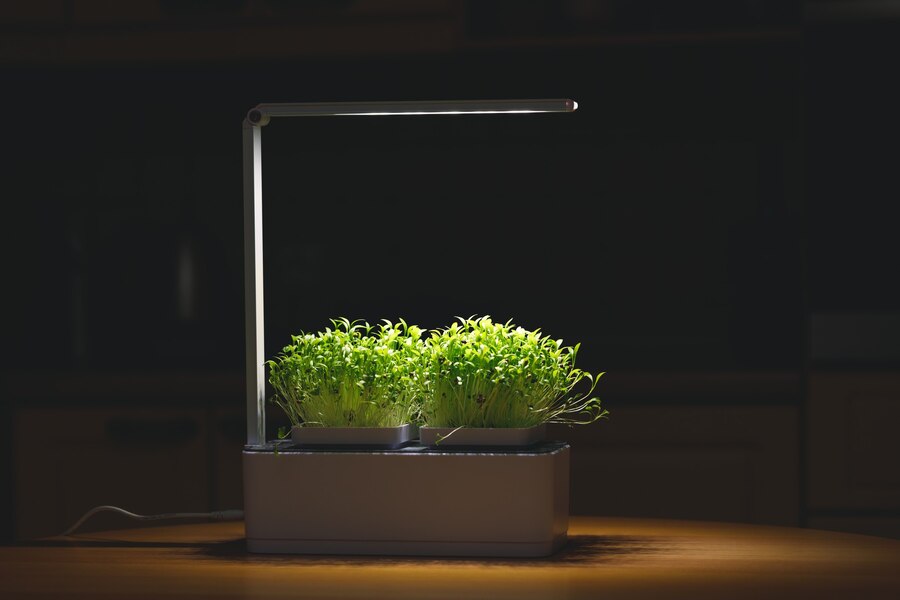
Setting Up Your Grow Light Timer
Setting up your grow light timer is a crucial step in ensuring the optimal growth and development of your plants. Before you begin, it’s important to familiarize yourself with the specific features and functions of your timer. Typically, a grow light timer will allow you to set both the on and off times for your lights, as well as provide options for daily or weekly scheduling.
To start, make sure you have your grow lights properly installed and positioned for the best coverage. Once this is done, locate a suitable power outlet near your growing area. Connect your timer to the power supply and plug your grow lights into the timer. Ensure that all connections are secure to avoid any electrical hazards.
Next, familiarize yourself with the timer settings. Most timers will have buttons or switches that allow you to set the desired on and off times. Take into consideration the specific light requirements of your plants. Some may need longer light exposure, while others may require shorter periods. It’s important to adjust the timing accordingly to meet the needs of your plants.
Once you have set the desired timing, double-check your settings to ensure they are accurate. It’s also a good idea to test the timer by manually turning it on and off to ensure it functions as expected. This will help you avoid any surprises later on and allow you to make any necessary adjustments before your plants are impacted.
Setting up your grow light timer may seem like a small and simple task, but it plays a crucial role in providing your plants with the right amount of light. With the proper installation and configuration, you can create an optimal light schedule that meets the unique needs of your plants and maximizes their growth potential.
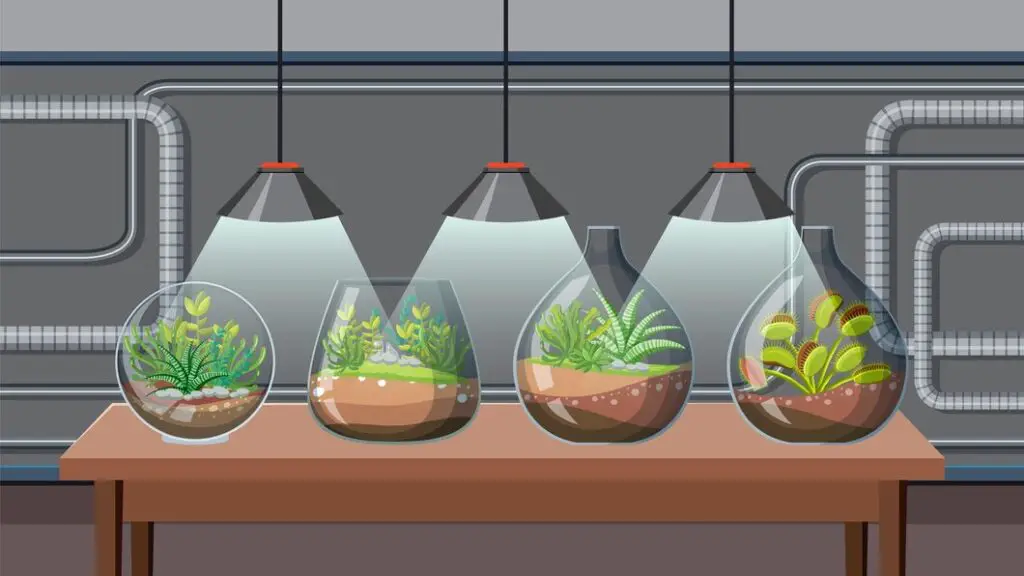
Creating an Optimal Light Schedule
To create an optimal light schedule for your grow lights, it is important to consider the specific needs of your plants. Different plants have varying light requirements at different stages of growth, so tailoring your light schedule to meet these needs can greatly enhance their development.
First, you should determine the light intensity and duration your plants require. This information can typically be found on the seed packet, plant tag, or through research. As a general rule, seedlings and young plants need more light than mature plants, so you may need to adjust the intensity and duration accordingly.
Next, consider the different stages of growth your plants will go through. Most plants have a vegetative stage, where they mainly focus on producing leaves, and a flowering or fruiting stage, where they shift their energy towards reproduction. During the vegetative stage, plants typically require a longer duration of light, usually around 16-18 hours per day. In the flowering or fruiting stage, the duration of light is often reduced to 12 hours per day to simulate natural light changes.
By aligning your light schedule with the specific needs of your plants, you can provide them with the optimal conditions for growth and development. This will ensure that they receive the right amount of light at the right times, leading to healthier, stronger plants and higher yields.
These plants have unique light requirements due to their growth process and flowering cycle. Unlike photoperiod plants, autoflowers do not rely on changes in light to trigger flowering; instead, they follow a predetermined schedule based on their age. Here’s a guide to help you maximize yield with the right light schedule:
| Growth Stage | Light Schedule | Description |
|---|---|---|
| Vegetative Phase | 18/6 or 20/4 | During the vegetative phase, provide at least 18 hours of daily light. Some growers opt for a 20/4 schedule (20 hours of light and 4 hours of darkness) for slightly faster growth. However, be cautious of potential nutrient burn. |
| Flowering Stage | 12/12 | Once transitioning to the flowering stage, maintain a 12/12 light schedule. This means 12 hours of light followed by 12 hours of darkness. This encourages bud development and maximizes yield. |
Tips for Implementing Effective Light Systems:
- Choose the Right Lighting Options:
- Consider LED or CFL lights, which can be tailored to provide the specific light spectrum needed for autoflowers.
- Understand Autoflower Light Requirements:
- Autoflowers follow a predetermined lifespan influenced by genetics and light. Provide optimal light during both vegetative and flowering stages.
- Monitor Your Plants Closely:
- Experiment with different light schedules and observe your plants to find the best approach for your setup and goals.
Remember, successful cannabis cultivation involves fine-tuning your light schedule to meet the unique needs of autoflowers.
Automating Your Grow Light Schedule
Automating your grow light schedule is a highly efficient way to ensure your plants receive the correct amount of light each day. By using a timer, you can easily program your grow lights to turn on and off at specific times, eliminating the need for manual adjustments. This not only saves you time and effort but also helps create a consistent and reliable light schedule for your plants.
One key advantage of automating your grow light schedule is the ability to maintain a regular photoperiod for your plants. Many plants require a specific number of hours of light and darkness each day for optimal growth and development. With a timer, you can easily set the desired duration of light and darkness, ensuring your plants receive the ideal conditions they need. This is especially important for flowering plants, as the correct light cycle can help induce and maintain blooming. Additionally, automating your light schedule can also help simulate natural sunlight patterns, further enhancing the growth and health of your plants.
Overall, automating your grow light schedule is a practical and effective way to provide your plants with the optimal amount of light they need. By eliminating the need for manual adjustments, you can ensure a consistent and reliable light schedule for your plants, leading to healthy and robust growth. So, if you want to take your indoor gardening to the next level, invest in a reliable timer and let technology do the work for you.
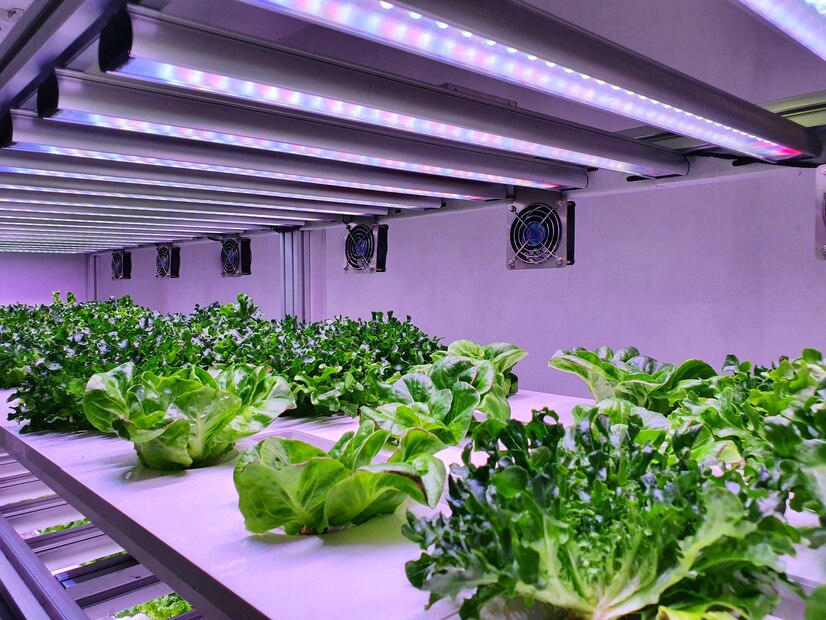
Maximizing Growth with Timed Light Intervals
Timed light intervals play a crucial role in maximizing growth for plants under grow lights. By providing the right amount of light at the right time, you can optimize photosynthesis and ensure your plants receive the necessary energy for robust growth.
During the vegetative stage, plants require longer light intervals, typically ranging from 16 to 18 hours of light per day. This extended light period allows plants to build the necessary foliage and root systems to support growth. In contrast, during the flowering stage, plants benefit from shorter light intervals, usually around 12 hours of light per day. This change in light schedule signals the plants to transition into the reproductive phase and encourages the formation of flowers and fruits.
By understanding the specific light requirements for each stage of plant growth and implementing timed light intervals accordingly, you can provide your plants with an optimal light schedule that promotes healthy development. Whether you’re using CFLs, LEDs, or any other type of grow lights, timed light intervals are a fundamental aspect of maximizing growth and achieving successful yields.
Using Timers for Light Spectrum Control
When it comes to controlling the light spectrum for your plants, timers can be a valuable tool. By using timers to control your grow lights, you can manipulate the spectrum of light that reaches your plants at different stages of their growth. This can significantly impact the quality and productivity of your plants.
One of the key benefits of using timers for light spectrum control is the ability to provide the right type of light at the right time. Different colors of light have varying effects on plant growth. For example, blue light promotes vegetative growth and is ideal for seedlings and young plants, while red light stimulates flowering and fruiting. By programming your timers to switch between different color spectrums throughout the day, you can mimic the natural light cycles that plants experience in nature and maximize their growth potential. Additionally, timers can help ensure that your plants receive consistent and evenly distributed light, which is important for avoiding growth irregularities and promoting overall plant health.

Managing Light Intensity with Timers
To effectively manage light intensity with timers, it is important to understand the needs of your plants and how light affects their growth. Different plants have different light requirements at various stages of their growth cycle. By using timers, you can control the amount of light your plants receive, ensuring optimal growth and preventing overexposure.
One way to manage light intensity is by adjusting the duration of light exposure. Some plants thrive with longer periods of light, while others may require shorter durations. By using timers, you can set specific intervals for your grow lights to turn on and off, providing the necessary intensity for your plants without causing stress or damage. Additionally, timers can help simulate natural daylight cycles, allowing your plants to rest and rejuvenate during dark periods, which is crucial for their overall health.
Another aspect of managing light intensity with timers is controlling the brightness of your grow lights. Too much light intensity can lead to light burn, where the leaves of your plants become scorched or bleached. By using timers, you can adjust the brightness or wattage of your lights, ensuring that your plants receive the appropriate amount of light for their specific needs. This not only helps prevent light burn but also optimizes photosynthesis, leading to healthier and more robust growth.
In conclusion, managing light intensity with timers is essential for the successful growth and development of your plants. By adjusting the duration and brightness of your grow lights, you can provide the optimal light conditions for your specific plant species. Whether you are growing vegetables, herbs, or flowers, using timers allows you to create a customized lighting schedule that promotes healthy growth and maximizes yields. So, take advantage of this valuable tool and harness the power of timers to enhance your indoor gardening experience.
Controlling light intensity is crucial for various applications, from indoor gardening to energy-efficient lighting systems. Here’s a simple guide on how to manage light intensity using timers:
| Application | Timer Type | Description |
|---|---|---|
| Indoor Plant Growth | Manual Timers | Plug-in timers can be used to turn grow lights on and off at specific intervals. |
| Set the timer to match the optimal light duration for your plants during different growth stages. | ||
| Programmable Digital Timers | These timers automate indoor or outdoor lighting. They resemble digital thermostats and allow precise scheduling. | |
| LED Lighting Systems | PWM (Pulse Width Modulation) Controllers | Use a 555 timer IC-based circuit to control LED brightness. PWM adjusts the voltage to regulate light intensity. |
| By varying the duty cycle, you can achieve different brightness levels. |
Additional Tips:
- Traffic Light Simulation (Arduino Project):
- Simulate a traffic light using an Arduino MEGA.
- Implement both USA- and UK-style lights based on fixed time intervals.
- The Arduino serves as an intelligent controller and timer, turning lights on/off and managing their duration.
- Energy Savings:
- Lighting controls, including timers, reduce energy consumption.
- Popular strategies yield 24-38% average energy savings in lighting systems.
- Potentiometer Control:
- For fine-tuning light intensity, consider using a potentiometer in conjunction with timers.
- Adjust the potentiometer to regulate the brightness of LEDs or other light sources.
Remember to tailor your approach based on the specific context and requirements of your lighting system.
Avoiding Common Timer Mistakes
Common timer mistakes can easily derail your grow light schedule and hinder the growth of your plants. One of the most common mistakes is forgetting to set the timer at the correct time. This can result in inconsistent lighting schedules, which can disrupt the plants’ natural growth cycles and even cause stress or stunted growth. To avoid this, always double-check the time you have set on your timer and ensure it aligns with the optimal light schedule for your specific plants.
Another mistake to avoid is relying solely on a manual timer without considering other factors that can affect the light intensity and duration. For instance, if your grow lights are placed too far away from your plants, they may receive insufficient light despite the timer being set correctly. Similarly, if your grow room or greenhouse lacks proper ventilation, excess heat can build up and potentially damage your plants, regardless of the timer settings. To prevent these issues, it is important to regularly monitor the position of your lights and ensure proper air circulation within your growing environment.
Avoiding common timer mistakes requires attention to detail and regular monitoring. By staying vigilant and understanding the specific needs of your plants, you can effectively utilize your grow light timer to create an optimal lighting schedule that promotes healthy growth.
Troubleshooting Timer Issues
If you are experiencing issues with your grow light timer, there are a few common troubleshooting steps you can take to address the problem. First, ensure that the timer is securely plugged into a functioning outlet. Sometimes, a loose connection can cause intermittent power supply to the timer and disrupt the schedule. Additionally, check the timer’s batteries if it is battery-powered, as low battery power can lead to malfunctions.
Another potential issue to consider is the timer’s programming. Double-check the settings to make sure the timer is programmed correctly and that the desired on/off intervals are accurately inputted. It’s also worth verifying that the timer’s internal clock is set to the correct date and time. Any inconsistencies in these settings can lead to irregular lighting schedules, which may affect the growth of your plants.
Additional Accessories for Timer Control
When it comes to timer control for your grow lights, there are a few additional accessories that can enhance your setup and provide even more control over your light schedule. One such accessory is a power strip or surge protector. These can be used to plug in multiple timers, allowing you to control multiple sets of lights or devices simultaneously. This is especially useful if you have a larger grow space or multiple grow areas.
Another helpful accessory is a remote control. Some timers come with a remote control feature that allows you to easily adjust the settings without having to physically access the timer. This can be especially convenient if your grow lights are in a hard-to-reach location or if you have multiple timers scattered throughout your grow area.
In addition to these accessories, you may also want to consider using a light meter or a lux meter. These devices can help you measure the intensity of your grow lights, which can be useful for ensuring that your plants are receiving the optimal amount of light. By monitoring and adjusting the light intensity, you can help promote healthy growth and maximize your yields.
Overall, these additional accessories can elevate your timer control setup and provide even more precision and convenience in managing your grow lights. By investing in power strips or surge protectors, remote controls, and light meters, you can take your grow operation to the next level and ensure that your plants are receiving the ideal lighting conditions for their growth and development.
Conclusion and Final Tips for Effective Grow Light Timer Usage
In conclusion, using a grow light timer can greatly improve the efficiency and effectiveness of your indoor garden. By automating the light schedule, you can ensure that your plants receive the optimal amount and duration of light each day. This not only promotes healthy growth and development but also helps to conserve energy and reduce costs.
To make the most out of your grow light timer, here are some final tips. Firstly, it is important to choose a timer that suits your specific needs and requirements. Consider factors such as the number of lights you have, the desired schedule, and any additional functions you may require. Secondly, ensure you fully understand the features and functions of your timer to maximize its potential. Take the time to read the manual and familiarize yourself with the settings and programming options. Lastly, regularly monitor and adjust your light schedule to accommodate the changing needs of your plants. As they grow and mature, their lighting requirements may vary, so it is important to stay attentive and make any necessary modifications.
Overall, with the right timer and proper usage, you can create an optimal light schedule that promotes healthy and vigorous plant growth. By utilizing a grow light timer, you can enhance your indoor gardening experience while also saving time, money, and energy. So go ahead, invest in a reliable timer and watch your plants thrive under the perfect lighting conditions.
Please do watch video!
Can I use a regular household timer for my grow lights?
It is not recommended to use a regular household timer for grow lights as they may not be designed to handle the specific power requirements of the lights. It is best to choose a timer specifically designed for grow lights to ensure proper functionality and safety.
How do I determine the optimal light schedule for my plants?
The optimal light schedule for your plants depends on their specific needs and growth stage. Research the light requirements of your plants and consider factors such as the type of plants, their growth stage, and the recommended light intensity and duration. Consult with experts or refer to plant-specific guides for more accurate information.
Can I automate my grow light schedule?
Yes, you can automate your grow light schedule by using a timer with programmable features. This allows you to set specific times for the lights to turn on and off, providing consistent and controlled lighting for your plants. Automation can help ensure that your plants receive the necessary light without manual intervention.
How can I control the light spectrum with timers?
Some advanced timers have the ability to control the light spectrum by adjusting the intensity of different colored lights. This feature allows you to provide your plants with the ideal spectrum for different growth stages or specific needs. Check the specifications of your timer to see if it offers this functionality.
Are there any common mistakes to avoid when using a grow light timer?
Yes, there are a few common mistakes to avoid when using a grow light timer. These include setting incorrect timer intervals, not adjusting the light schedule as the plants grow, forgetting to account for natural light cycles, and failing to regularly check and maintain the timer for optimal performance.
What can I do if I encounter issues with my grow light timer?
If you encounter issues with your grow light timer, first check the power source and connections to ensure they are secure and functioning properly. If the problem persists, refer to the user manual or contact the manufacturer for troubleshooting assistance. It is also a good idea to have a backup timer on hand in case of emergencies.
Are there any additional accessories that can enhance timer control?
Yes, there are additional accessories that can enhance timer control. Some examples include remote control devices, smartphone apps, and power strips with built-in timers. These accessories provide convenient and flexible control over your grow lights, allowing you to adjust settings from a distance or integrate them into a larger automation system.
What are some final tips for effective grow light timer usage?
Some final tips for effective grow light timer usage include regularly checking and maintaining the timer, keeping a backup timer for emergencies, adjusting the light schedule as plants grow, and staying informed about the specific light requirements of your plants. Additionally, it is important to regularly monitor and assess the performance of your plants under the timed lighting conditions to make any necessary adjustments.

Nicole Burke is a dynamic writer at SouthElMonteHydroponics, fueled by her passion for horticulture and environmental sustainability. Armed with a degree in Environmental Science from a renowned institution, Nicole’s expertise lies in hydroponic gardening, organic farming, and biodiversity conservation. Her insatiable curiosity and love for nature drive her to explore innovative techniques in hydroponics, seeking to revolutionize the way we grow crops in urban environments. Nicole’s writing reflects her deep commitment to promoting eco-conscious practices and fostering a deeper connection between humans and the natural world. Through her engaging storytelling, she inspires others to embrace sustainable living and harness the power of hydroponics for a greener future.


